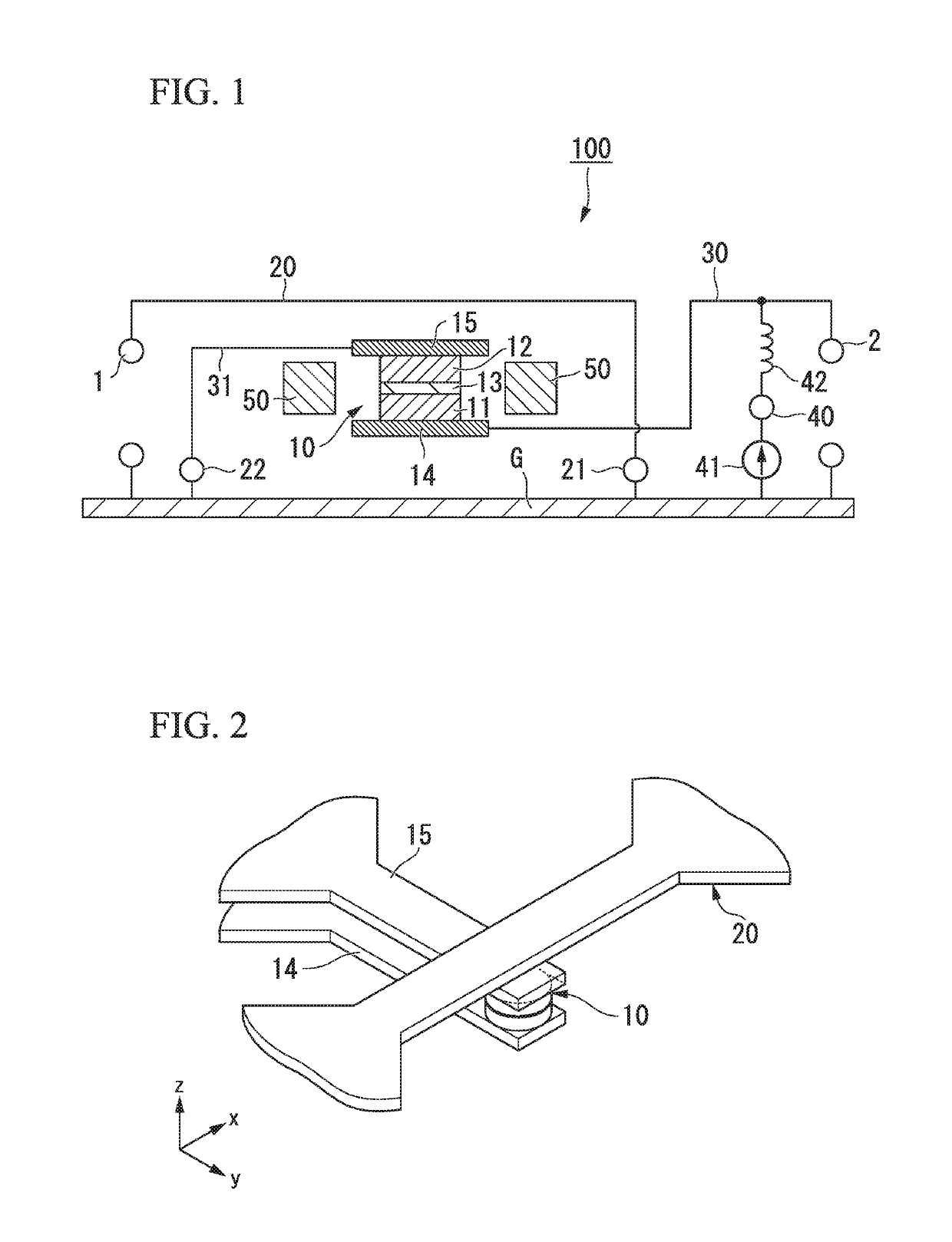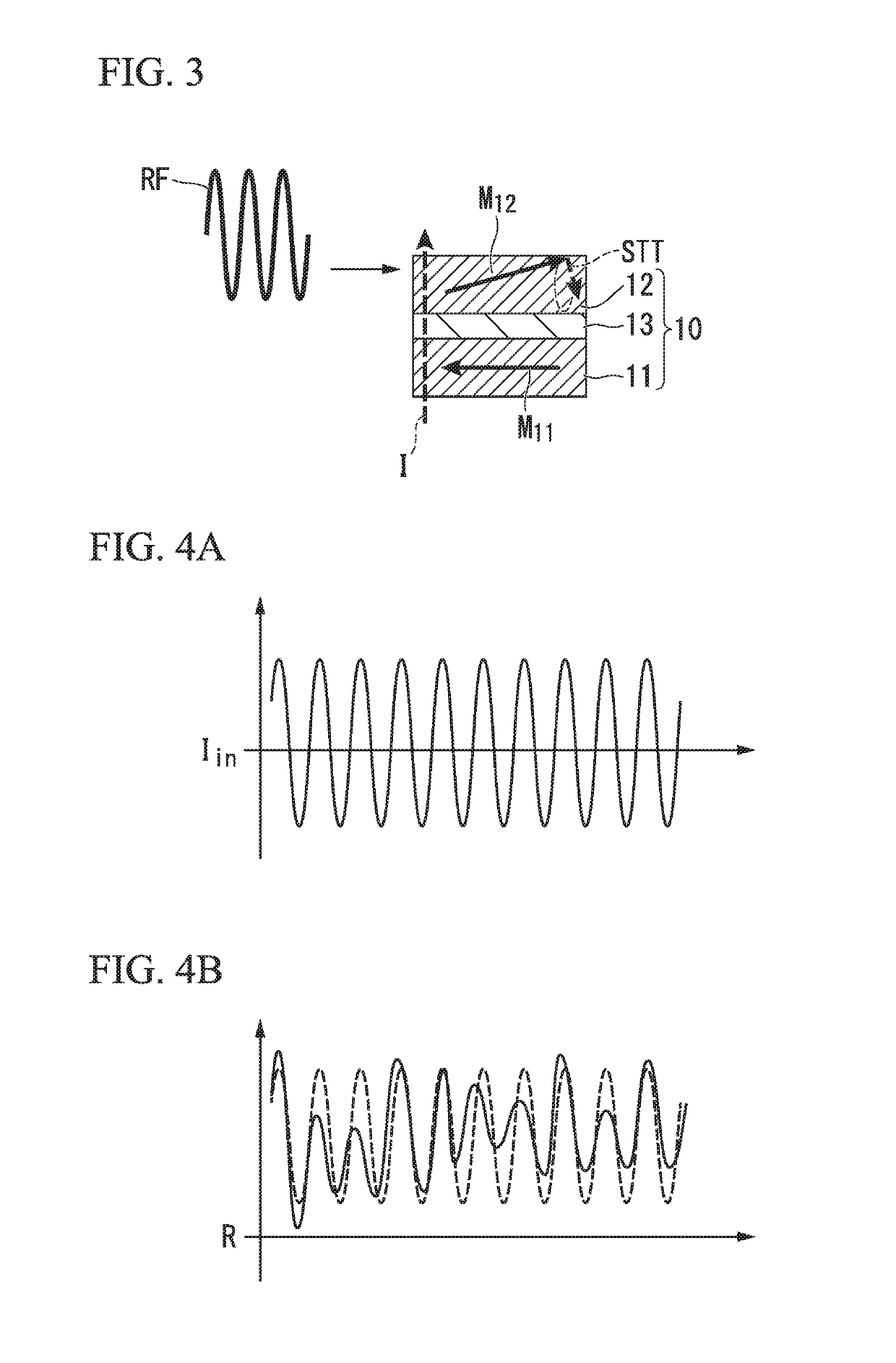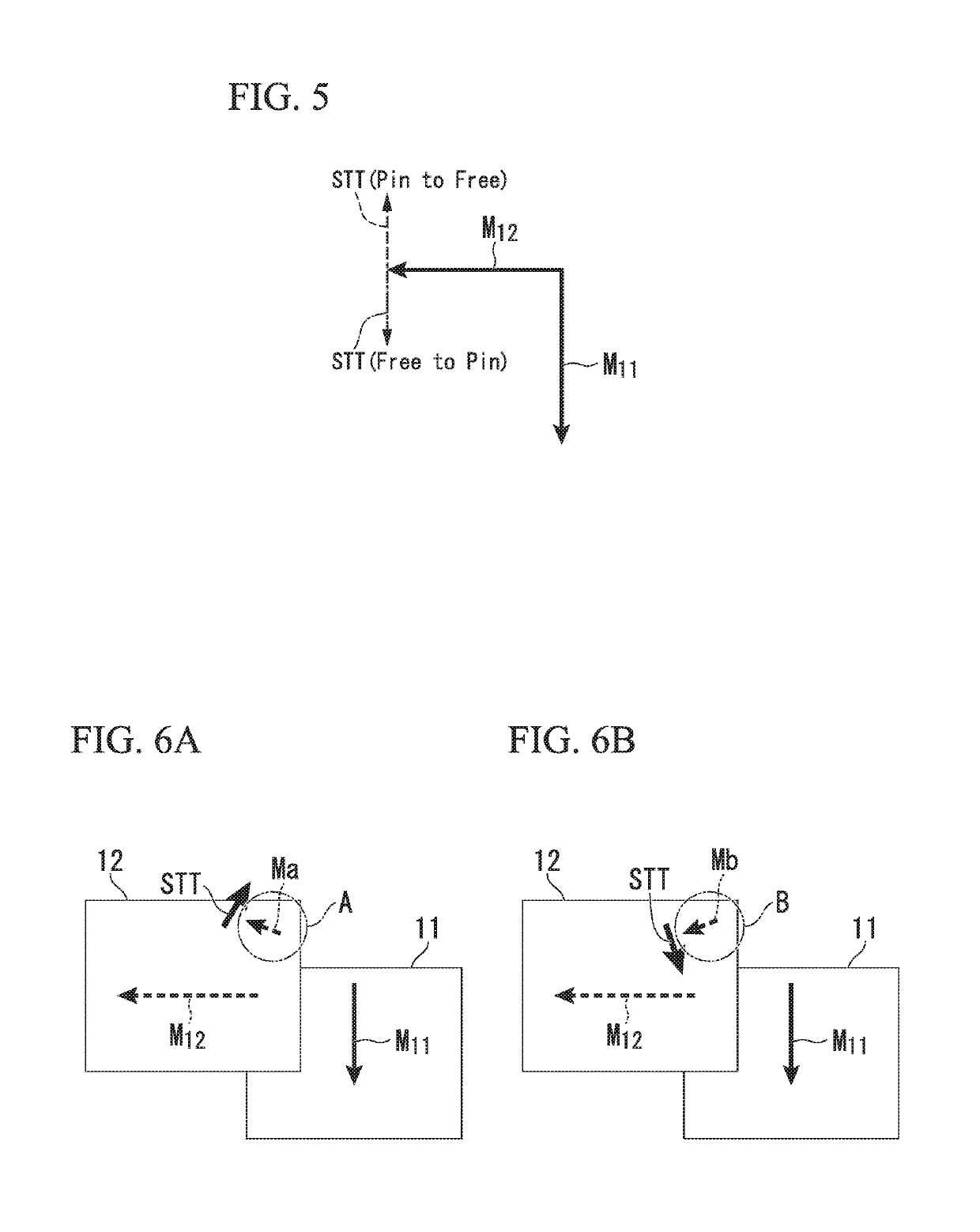Magnetoresistance effect device and high frequency device
a magnetoresistance effect and high frequency technology, applied in the field of magnetoresistance effect devices and high frequency devices, can solve the problems of insufficient investigation of other applications of ferromagnetic resonance phenomena, and achieve the effect of increasing the change rate of magnetoresistance of the magnetoresistance effect element 10 and high spin polarizability
- Summary
- Abstract
- Description
- Claims
- Application Information
AI Technical Summary
Benefits of technology
Problems solved by technology
Method used
Image
Examples
first embodiment
[0032]FIG. 1 is a schematic diagram showing a circuit configuration of a magnetoresistance effect device according to a first embodiment of the present disclosure. The magnetoresistance effect device 100 shown in FIG. 1 includes a magnetoresistance effect element 10, a first signal line 20, and a DC application terminal 40. The magnetoresistance effect device 100 receives a signal from a first port 1 and outputs a signal from a second port 2. The signal to be output can be changed by a frequency setting apparatus 50.
[0033]The first port 1 is an input terminal of the magnetoresistance effect device 100. The first port 1 corresponds to one end of the first signal line 20. An AC signal source (not shown) is connected to the first port 1, and an AC signal (a high frequency signal) can be applied to the magnetoresistance effect device 100. The high frequency signal applied to the magnetoresistance effect device 100 is, for example, a signal having a frequency of 100 MHz or more.
[0034]The...
second embodiment
[0109]FIG. 8 is a diagram schematically showing a circuit configuration of the magnetoresistance effect device 101 according to a second embodiment. The magnetoresistance effect device 101 according to the second embodiment is different from the magnetoresistance effect device 100 according to the first embodiment in that there are a plurality of magnetoresistance effect elements 10, which are connected in parallel to each other. The other constituents are the same, and constituents which are the same are denoted with the same reference numerals.
[0110]The magnetoresistance effect device 101 shown in FIG. 8 includes a first magnetoresistance effect element 10a and a second magnetoresistance effect element 10b. The first magnetoresistance effect element 10a and the second magnetoresistance effect element 10b are connected in parallel to the second port 2 and the power supply 41. A DC current or a DC voltage is applied from the power supply 41 to the first magnetoresistance effect elem...
third embodiment
[0114]FIG. 10 is a diagram schematically showing a circuit configuration of a magnetoresistance effect device 103 according to a third embodiment. The magnetoresistance effect device 103 according to the third embodiment is different from the magnetoresistance effect device 100 according to the first embodiment in that there are a plurality of magnetoresistance effect elements 10, which are connected in series. The other constituents are the same, and constituents which are the same are denoted with the same reference numerals.
[0115]In the magnetoresistance effect device 103 shown in FIG. 10, a first magnetoresistance effect element 10a and a second magnetoresistance effect element 10b are connected in series in a closed circuit formed of a power supply 41, an output signal line 30, a line 31, and a ground G ADC current or a DC voltage is applied from the power supply 41 to the first magnetoresistance effect element 10a and the second magnetoresistance effect element 10b and, in eit...
PUM
 Login to View More
Login to View More Abstract
Description
Claims
Application Information
 Login to View More
Login to View More - R&D
- Intellectual Property
- Life Sciences
- Materials
- Tech Scout
- Unparalleled Data Quality
- Higher Quality Content
- 60% Fewer Hallucinations
Browse by: Latest US Patents, China's latest patents, Technical Efficacy Thesaurus, Application Domain, Technology Topic, Popular Technical Reports.
© 2025 PatSnap. All rights reserved.Legal|Privacy policy|Modern Slavery Act Transparency Statement|Sitemap|About US| Contact US: help@patsnap.com



